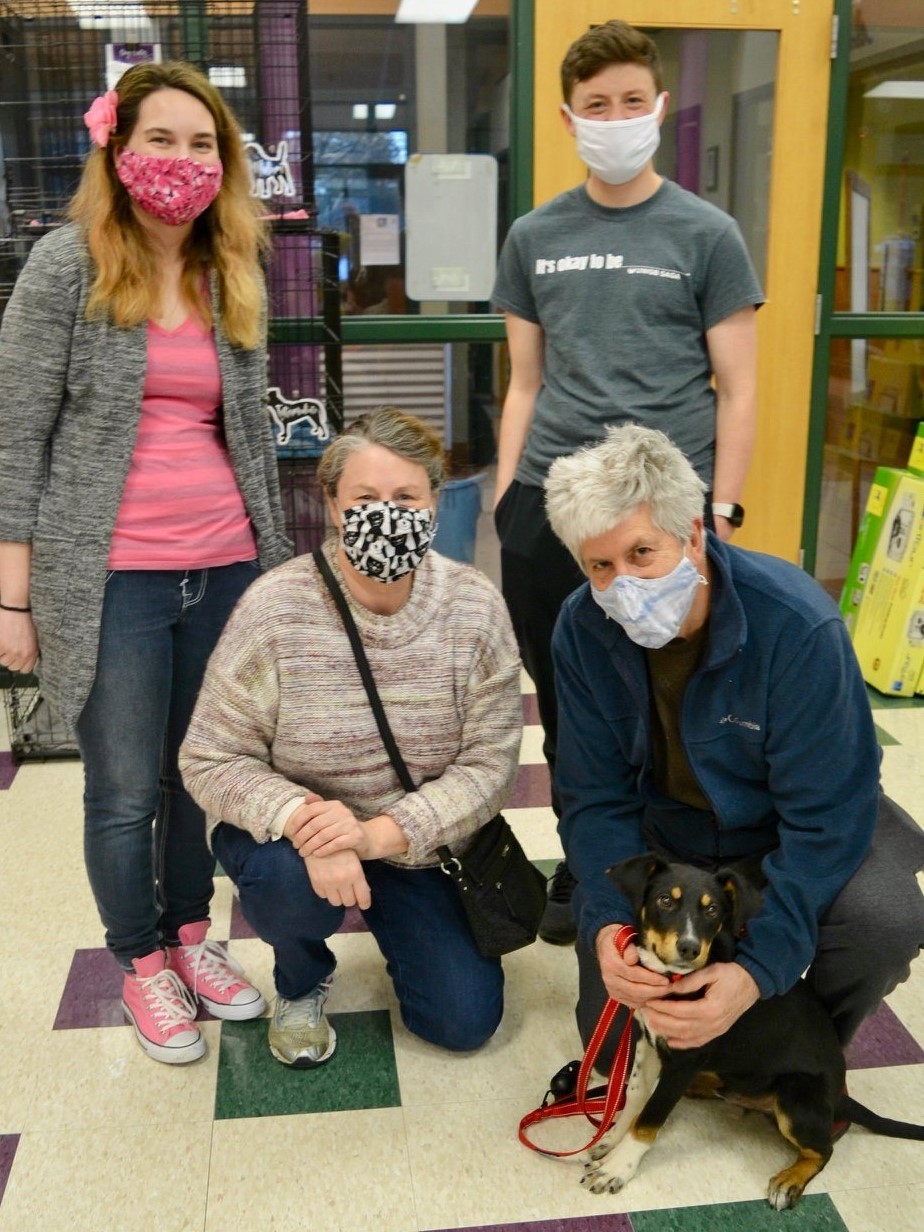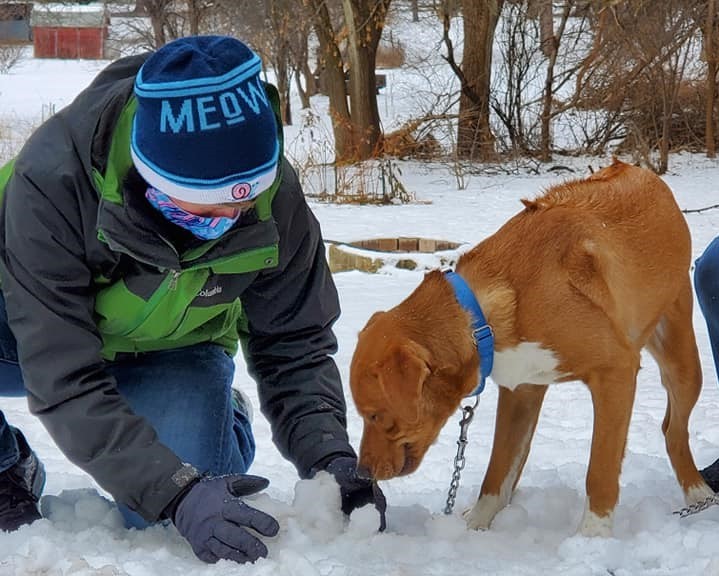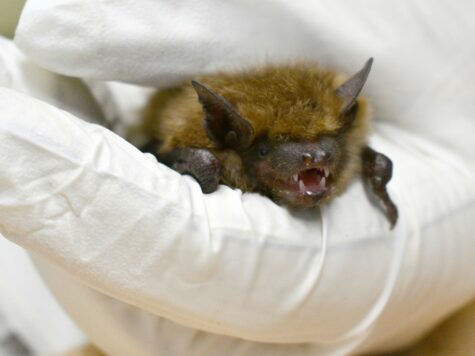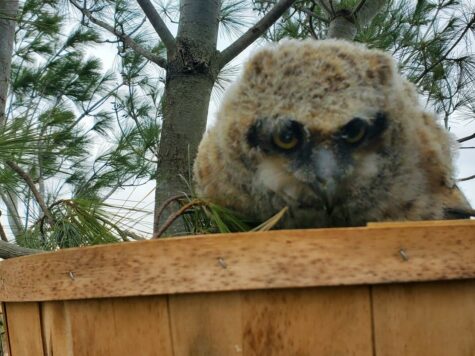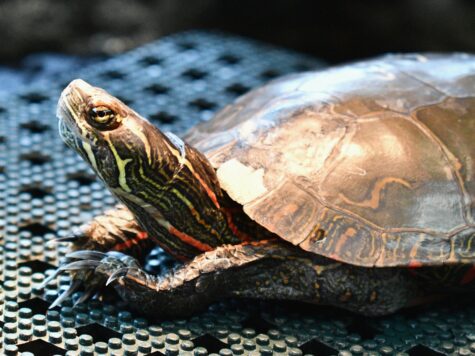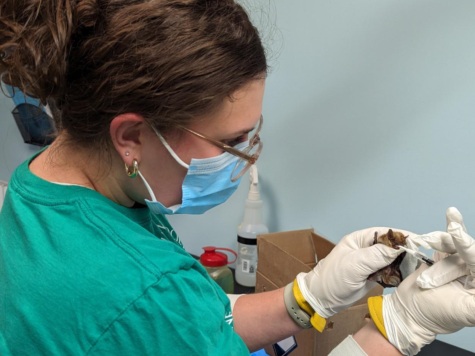A part-time dog
Michael Gust has always been a dog lover, but growing up in a household with four children made it financially impossible for his family to have a house pet. Now branch manager at the U.S. Bank in Madison, he has latched on to a new Dane County Humane Society (DCHS) program that allows people to take dogs home with them temporarily for outings and overnight (O&O) stays. Gust, a DCHS volunteer who recently moved into a new house in DeForest, used to live in an apartment on Madison’s west side where the environment was not suitable for a dog to live full time. When DCHS established the overnights and outings program in October 2020, he was more than happy to participate.
“It couldn’t be more of a perfect situation for me,” he said. “Taking a dog for an outing and an overnight stay is perfect.”
The first dog Gust wanted to take with him was adopted 20 minutes before he arrived at the shelter. He was offered a dog named Dandy as a substitute.
“Dandy was this super muscular pit bull terrier mix,” Gust said. “My girlfriend was expecting this little love ball.”
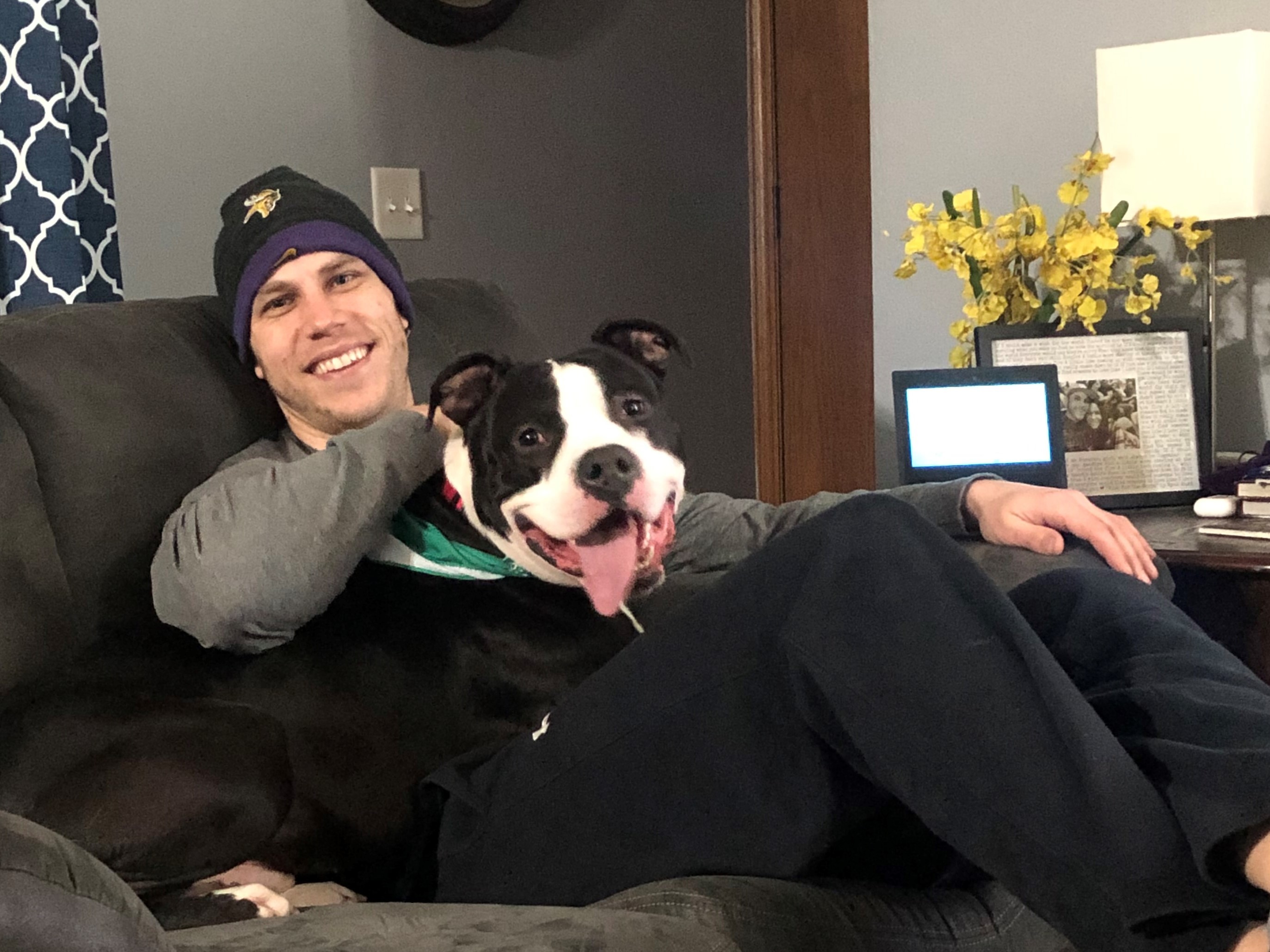
Still, Dandy, Gust and his girlfriend hit it off in their short time together. Gust said he worked with Dandy on his leash manners and taught him other lessons that would make him a better candidate for adoption.
“The more attention and training you can give them, the better,” Gust said. “That individual time working with their manners and on their behavior really sets them up for their best chance of finding a forever home. It’s so rewarding for that reason.”
Gust’s second guest pet was Bennett, a large, stressed-out dog who immediately threw up inside Gust’s apartment. Eventually, Bennett settled down after Gust took him out for a short walk.
“You could see him starting to take deep breaths and just melting into the carpet, taking a nap,” Gust said.
Now that Gust is living with his girlfriend in a larger home in DeForest with a backyard, he said there has been talk about getting a dog full-time. But Gust said he may continue with the O&O program.
“Now that we have this yard, maybe I could take a dog through this program and gain more experience, where it’s quiet and less stressful,” he said.
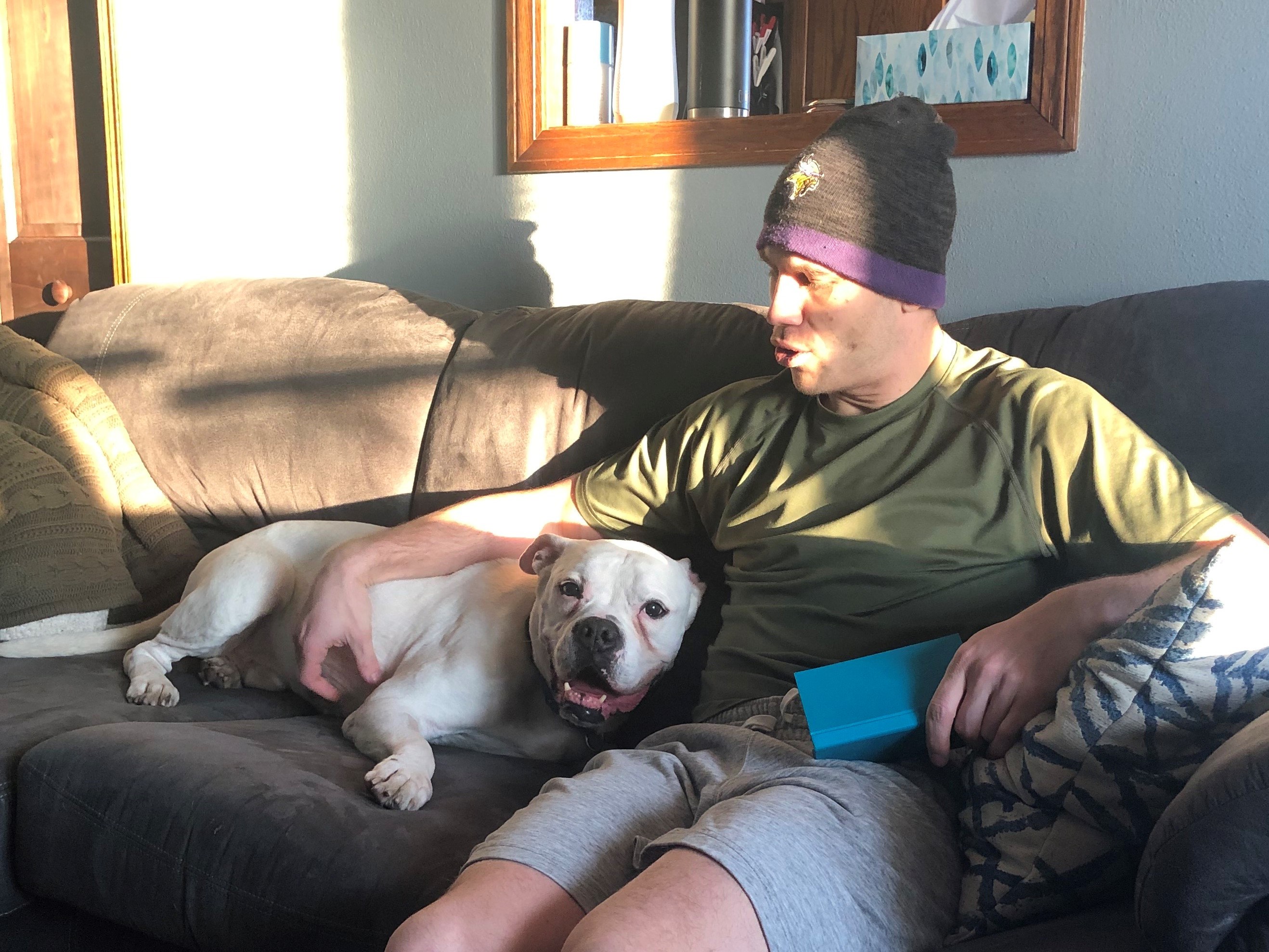
Volunteers do their part
Erin Kruckenberg, canine behavior specialist at DCHS, said the shelter’s Canine Behavior Team identifies dogs who are behaviorally safe, but are stressed in the shelter environment.
“Some volunteers who are in the shelter regularly may also identify a dog they would like to take, and we try to accommodate that so long as it doesn’t prohibit the dog from being adopted or getting medical attention,” she said. “There are also some volunteers who let us know a certain day they would like to do an outing, and we choose a dog for them based on our population that day.”
Kruckenberg adds that getting the animals out of the shelter for overnight stays or outings increases public exposure that may lead to future adoption.
“We learn more about the dog’s personality when we can see how they behave in different settings while on outings. We can sometimes find out about hidden skills or challenges they have, so we can tailor our training to their needs or share information about their unique personalities with potential adopters,” Kruckenberg said.
“Additionally, it allows dogs to practice some of their training we have been working on in a different environment. The volunteers really benefit from it as well, as they get a hiking buddy for the day, or maybe a snuggler to spend the night, and it’s a different way to help out the dogs and shelter.”
Kruckenberg said the program has been a great way for volunteers to help animals during the pandemic. Even though the shelter has been forced to minimize volunteers to reduce spread of the coronavirus, some have offered to take dogs home with them for temporary stays.
“They are able to bring a dog home for a couple of nights or just out for a stroll,” Kruckenberg said. “Some of our volunteers can’t have dogs permanently in their living situation, but really love getting the one-on-one time of picking up a dog for overnights and outings.”
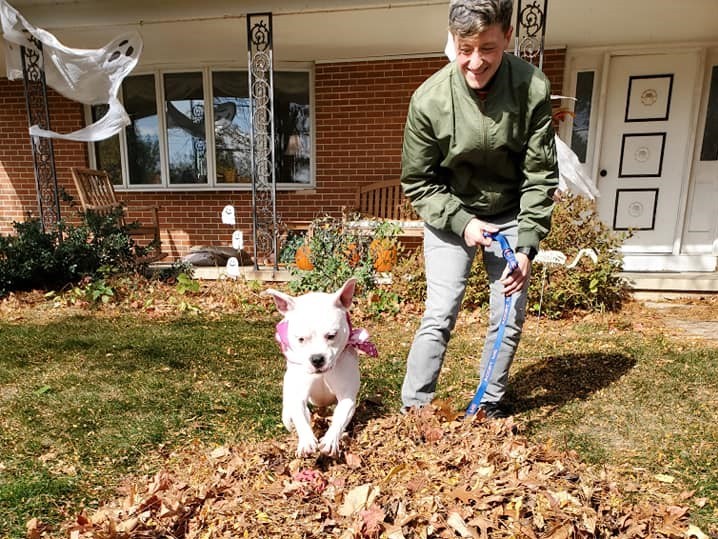
Avid participants
Michelle Kuyoth of the senior care staff at DCHS and her boyfriend James have also had wonderful experiences with dogs through the O & O program. The pair have taken about six dogs from the shelter, some for multiple home visits. She said it was a gift to James, who works in a stressful job and never owned a pet since his childhood dog passed away.
“I offered him this outing opportunity and, of course, he accepted,” Kuyoth said. “After an afternoon of playing in the leaves, jogging around the block, and taking about a thousand pictures, James made it clear we needed to do this more.”
According to Kuyoth, it’s been memorable to see how the dogs improve their behavior and become more obedient. Two dogs who were fearful of men gradually became less frightened after spending time with Kuyoth and James.
“The first dog was able to get so comfortable while playing and cuddling with James that when James’s dad joined the outing, she ran right up to him for pets without giving it another thought,” Kuyoth said.
“The second dog did not want to go anywhere near James when the outing began. But through the use of patience, treats, and his favorite little ball toy, we were able to get this dog to relax and open up. We took this same dog out again a week later, and while he was still fearful, he was showing much more courage as he explored around the building and interacted with the people around him.”
Kuyoth agrees with Gust that the O&O program has been successful at improving the demeanor of many animals, thus making them more adoptable.
“We have seen fearful dogs get comfortable and brave. We have seen jumpy, mouthy, overstimulated, rowdy dogs chill out a bit after some extra play time. We have seen bored dogs have the extra stimulation they need in order to keep their minds active and happy.” Kuyoth said. “The shelter is a loving and caring space, but it can still be stressful for the animals. And unfortunately, we cannot give each animal all of the time they deserve. But these outings have been able to fill some of these holes.”
One of the dogs that spent time with the couple was eventually adopted by James’s parents.
Kuyoth said the relationships developed with these animals have been rewarding for her and James, and it’s special to see the dogs fall asleep on their laps during the trip back to the shelter.
“It’s a sign of a worn-out, happy, and trusting dog,” she said. “That has definitely happened during many of these outings.”
